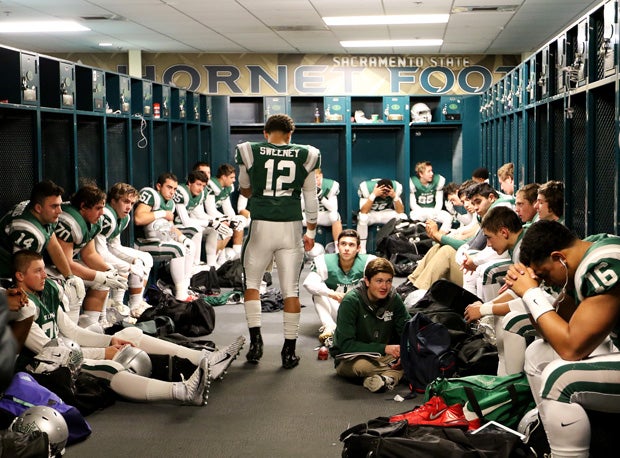Video: Ben Roethlisberger high school highlights
See the Steelers quarterback in action as a prep.The Pittsburgh Steelers' Antonio Brown made a lot of news after their divisional playoff win versus the Kansas City Chiefs. But the news wasn't good news. It was a lot of noise and distraction.
If you follow the NFL, you've likely already seen the news. And you might have seen the video.
Brown chose to broadcast from the locker room via Facebook Live, an app that enables users to show a live video feed to whoever follows them on Facebook. We are in 2017, so every person with a smart phone can now be considered a reporter with a live feed to the entire world.
It was an intriguing video because it gave viewers an insight as to how important a "like" and a "view" is to a person, even a person with millions of fans worldwide. Brown kept giving his teammates an update of how many people were watching. "25,000 now. We are up to 30,000," a few minutes later "35,000 watching live." Here is a multi-millionaire, one of the more popular players in the most popular pro sport today, yet he was excited like a teenager with the amount of people watching him.
What really got Brown into trouble was the fact that he was rolling live when his head coach gave the team its postgame talk. And in that talk, Mike Tomlin referred to the upcoming opponent, the New England Patriots, with a derogatory name.
So, the question for high school coaches is "how do you handle a video camera in your locker room?"
Most student-athletes in your locker room carry a camcorder to the world in their pocket. As a coach, you'd better address how they use that phone within the confines of your program, your weight room, your locker room and your meeting rooms. Coaches who fail to address this may find themselves at the center of a media firestorm, similar to the Pittsburgh Steelers.

The locker room is a place where public airing of speeches or actions can cause major issues.
Photo by Gary Jones
This week, instead of being able to focus 100 percent of their attention on the upcoming opponent, there will be a major distraction, which was totally avoidable.
As an athletic director back in 2012, I wrote a Social Media Policy for the student-athletes and coaches who I was supervising. I have seen a lot of policies out there on the internet. Many are very long-winded and not digestible for a 14-year-old. They read like a district policy, foreign to a teenager.
The one I put together has 10 simple guidelines and one of those guidelines is: Never post pictures from the locker room, practice or game without the permission of the athletic director or head coach.
This guideline will help to protect you, your coaching staff and the student-athletes in the room. In fact, it was interesting to see adults wrapped only in towels in Brown's video as players were returning from or heading to the showers. A simple slip of a towel would have created even more issues for Brown and his teammates, and that organization.
Sure, the Steelers and the NFL both have guidelines that Brown violated. So, the guidelines and or Social Media Policy is not going to guarantee that you won't have problems in the future. Policies do not do that. But they most definitely start the conversation. And they will help to support discipline in the future, should you need to fall back on your policy. Like any policy, it is important to communicate regularly what your expectations are.
Coaches, make sure to address this camera in your locker room situation with your teams. Failure to do so may jeopardize a whole lot for you and your program and your student-athletes in the future.
Chris Fore is a veteran Head Football Coach and Athletic Director from Southern California. He consults coaches and programs nationwide through his business Eight Laces Consulting.
